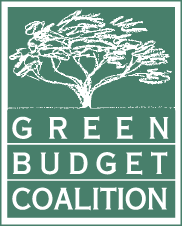The global transition to zero-carbon energy systems is affecting workers across sectors—from oil and gas to manufacturing to agriculture. Canada has taken positive steps forward in advancing a just transition in the past year, including introducing the Sustainable Jobs Act; committing to establish a Sustainable Jobs Secretariat, Partnership Council, and Training Centre; attaching labour conditions to new investment tax credits; and producing an interim Sustainable Jobs Plan. It is essential that workers and communities are engaged in social dialogue about the inevitable transition away from fossil fuels, and that the creation of sustainable jobs aligns with Canada’s climate commitments. Actions must advance goals of reconciliation and equity to more fairly distribute the social and economic benefits of a clean economy.
This fiscal year and Budget 2024 will be crucial for building upon the foundation of this work and ramping up progress and investments informed by ongoing engagement and social dialogue. The scale of investment, and the coordination required, in planning and job creation, must match the scale of the energy transition, to save costs and prevent workers from being stranded. Investing in internal government coordination, data collection, skills training, worker supports and regional planning early on will result in a smoother transition with less disruption for workers and communities.
While there are many government supports for workers, additional programs and investments are needed to fill key gaps in current funding. The following recommendations include estimates of investment levels in key areas that would need to be refined through social dialogue with affected workers, employers, and direct government-to-government engagement with Indigenous communities. Special attention is needed to ensure that investments support people of colour, youth, women, migrant workers, and other groups facing workforce barriers in the move to low-carbon industries.
Total Recommended Investment: Approximately $12.2 billion over five years
Recommended Investments:
- Data collection, analysis and modelling to inform sustainable jobs planning: $30 million over five years is needed for regional data and modelling initiatives that define and classify technologies and jobs, assess transition impacts, provide industry outlooks, model regional labour trends based on specific projects, and predict labour force requirements needed for each key sector and region, with particular attention to rural and remote communities. This modelling and strategic planning are needed at the national level to inform regional and sectoral decision-making, and could be coordinated through the proposed Sustainable Jobs Secretariat. [NRCan, ESDC, StatCan, CCEI]
- Indigenous participation in sustainable jobs governance and self-determined planning: Create a transfer of at least $1 billion per year for five years with three distinctions-based streams to support Indigenous governments, organizations, and peoples involvement in sustainable jobs governance and planning, including via engagement with the Partnership Council and Secretariat. These funds could also support Indigenous-led community and regional planning in transition-affected areas. Specific budget requirements and funding allocation should be determined by Indigenous groups. [NRCan]
- Workforce development, training, and upskilling: Program creation and funding should be informed by regional and sectoral data and modelling, to ensure resources match the workers and industries in need.
- Direct the next generation toward sustainable jobs: Support youth entering sustainable careers by establishing a $150 million tuition credit program over five years that helps address labour demands and avoid shortages in net-zero compatible industries, prioritizing members of under-represented and equity- deserving groups. (Program details to be identified by stakeholders.) [ESDC]
- Support workers navigating pathways to sustainable jobs: Increase the $250 million previously allocated toward “investing in skills for the net-zero economy” with an additional $250 million over five years to total $500 million over five years across the Sustainable Jobs Training Centre and Sustainable Jobs Stream under the Union Training and Innovation Program. This additional funding should include support for non-unionized workers, career development, business, finance, retirement, and mental health supports. Services should be delivered by trusted community stakeholders through local centres, similar to those established in Alberta and Saskatchewan. [NRCan, RDAs]
- Regional planning and job-creating projects.
- Resource regional planning and capital investment: Establish a new, regional coordination and funding delivery program, with an initial investment of $6.5 billion over five years. Building off the work of the Regional Energy and Resource Tables and net-zero industrial policy, this program would allocate funding for each province or region to invest in jobs-generating regional planning and major capital projects in transitioning regions. This fund should have climate and biodiversity conditions attached to ensure that job creation and industrial development are advancing Canada’s international commitments. (See also Climate and biodiversity conditions on federal spending, later in this document) [NRCan, RDAs]
- Invest in community vitality: Provide $270 million over five years in dedicated funding to diversify the economies of ‘transition-affected’ communities and provide capacity support to implement new projects. Projects could include initiatives that bolster municipal services and enhance social security and wellbeing economies to address the ripple effects of the transition. This should include specific wrap-around supports for Indigenous communities, as well as translation services as needed. [NRCan, RDAs]
